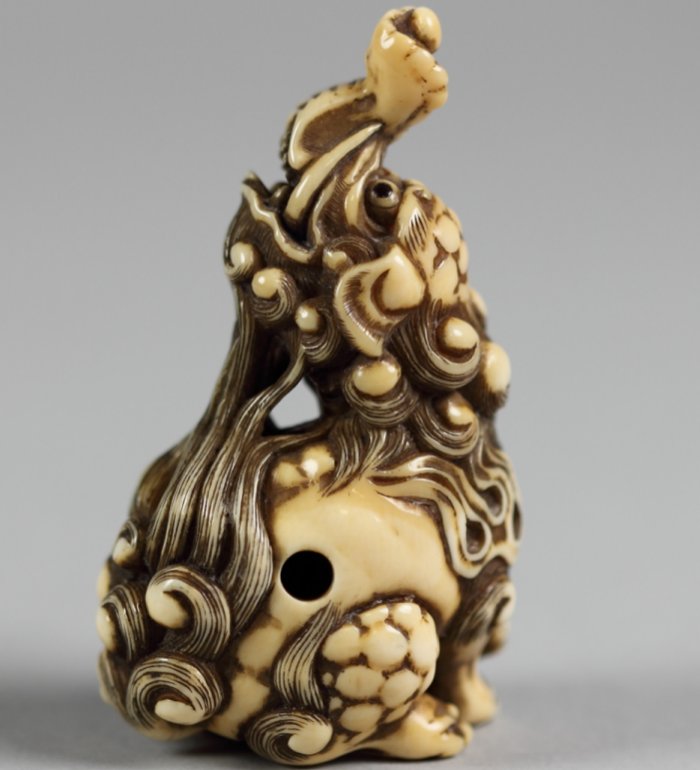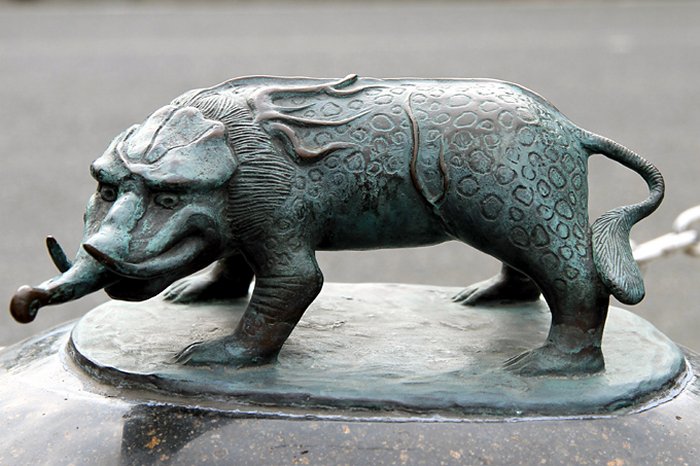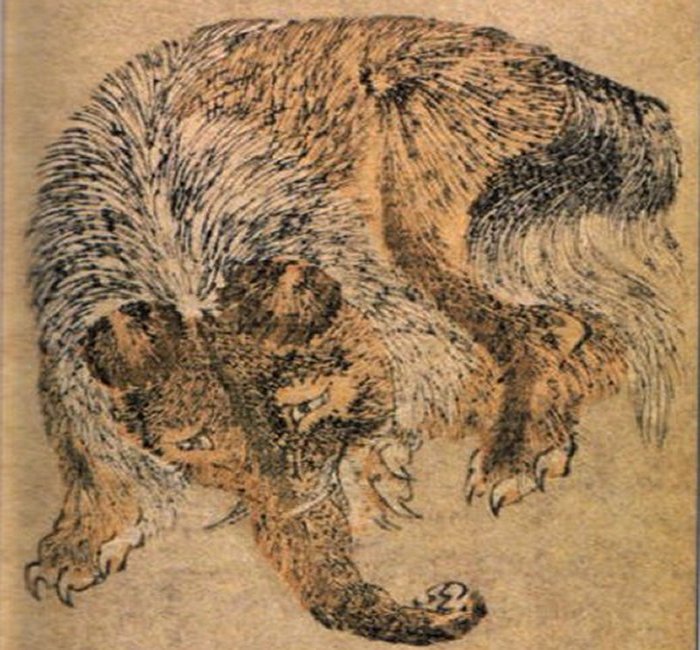A. Sutherland – AncientPages.com – In Japanese mythology, we encounter an exciting creature known as Baku, which is well-known for eating bad dreams.

Baku – Mythical Creature Devouring Nightmares – 18th century, Japan. Image credit: The Met
However, there is also a darker side to Baku. According to tradition, people pray to him at night to devour nightmares so they may never be seen again. With Baku’s help, the day can then begin in peace.
Some say that Baku eats all dreams, not only nightmares. It includes visions of aspiration, dreams of your future, and dreams of hope. Images of Baku or stuffed Baku toys (he’s cute!) are placed in children’s bedrooms or for anyone suffering chronic nightmares. His name painted on headboards or set in the bedroom may be sufficient to promote peaceful, secure, uninterrupted sleep.
When a child in Japan wakes to shake from a nightmare, she knows what to do. Hugging her face in her pillow, she whispers three times, “Baku-san, come eat my dream. Baku-san, come eat my dream. Baku-san, come eat my dream.” If her request is granted, the monstrous Baku will come into her room and suck the bad dream away.”
There have been various ways of summoning this yokai.
In Fukushima, it is said that if, after waking from a bad dream, you say, “I give this dream to the Baku,” then that dream will never trouble you again.

Bronze statue of “Baku” installed on Mizuki Shigeru Road. Image credit: – CC BY-SA 3.0
In other prefectures, you repeat, “Baku-san, come eat my dream” three times to summon Baku and eat your nightmares.
In his book “Ancient Chinese Gods and Beasts,” Kyoto University professor Hayashi Minao points to ancient bronze ware and other artifacts inscribed with images of the mythical Baku.
Still, one must remember that a Baku cannot and should only be summoned cautiously.
It is believed that a Baku that is hungry might not be satisfied with a single dream and might suck away her hopes and ambitions along with it, leaving her hollow.
An early 17th-century Japanese manuscript, the Sankai Ibutsu, depicts Baku as a Chinese mythical chimera with an elephant’s trunk, rhinoceros eyes, an oxtail, and tiger paws, which in belief protected against pestilence and evil, although eating nightmares was not included among its abilities.
However, in a 1791 Japanese wood-block illustration, a specifically dream-destroying Baku is depicted with an elephant’s head, tusks, and trunk, with horns and tiger’s claws. The elephant’s head, chest, and tusks are characteristic of Baku portrayed in the classical era (pre-Meiji) Japanese wood-block prints, inshrine, temple, and netsuke carvings.

A baku, as illustrated by Hokusai – Public Domain
While wildly stylized, Baku resembles the Asian tapir that once existed in China but has since gone extinct. Baku is not alone in this; Kirin (Qilin) is Japanese for a giraffe and a mythical Chinese monster.
Some say a wayward sailor drifted to Malaysia and returned with stories of a mᴀssive creature transformed by legend. Which came the first, the myth or the animal is hidden in the past. Many say that the two are unconnected and that the similar appearance is pure coincidence, with the animal named after the legend.
Baku is often confused with another legendary Chinese animal, the Hakutaku (called a bai ze in Chinese), a wise, fabulous beast that resembles a white ox, but not exactly.
The Hakutaku has nine eyes, three on the head and three on each side below his six horns. Hakutaku is a symbol of good omen and good luck – live in remote mountains. It only appears in countries where the land’s ruler is a wise and virtuous leader. This intelligent creature speaks human languages and knows much about everything in creation.
In fact, at Gobyakukan-ji temple in Tokyo, there is a statue called the Baku King, originally a statue of a Hakutaku.
Carvings of Baku decorate temples in Japan. It remains unclear whether the Baku existed in ancient times or if the creature is purely mythological, but the beast is still very much alive in the minds of modern people.
A provocative thought is that Baku once possessed supernatural powers and could affect peoples’ thoughts, dreams, and consciousness.
Written by – A. Sutherland – AncientPages.com Senior Staff Writer
Updated on December 31, 2023
Copyright © AncientPages.com All rights reserved. This material may not be published, broadcast, rewritten or redistributed in whole or part without the express written permission of AncientPages.com
Expand for references
References:





